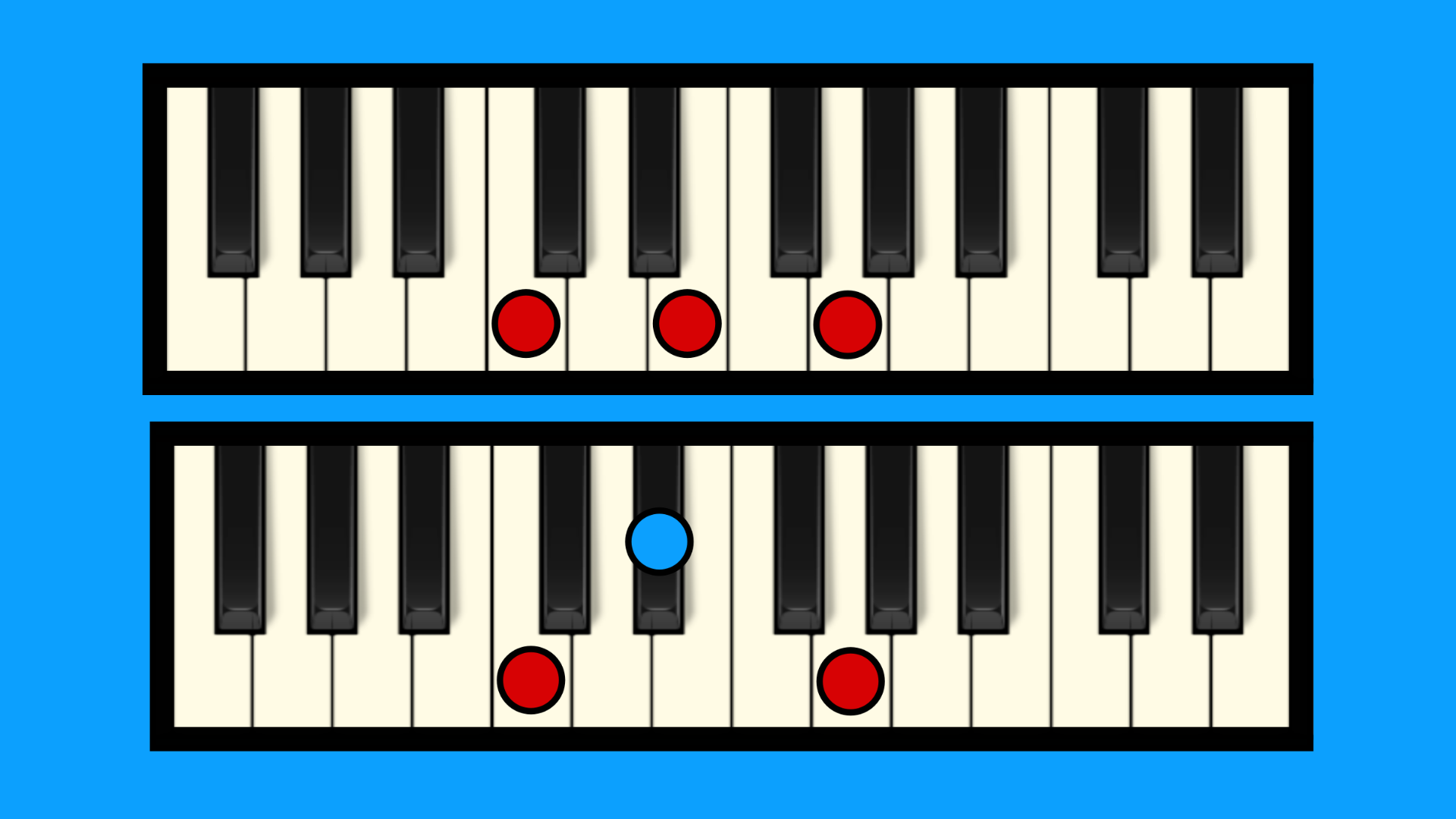 What is a Chord in Music?
What is a Chord in Music?
A chord is a group of three or more pitches played together. In Western music, chords are typically built by stacking intervals of thirds on top of a root note.
Major chords and minor chords are the most common types of chords in Western music, and they play a central role in many musical styles.
What is a Major Chord?
A major chord is a chord built using a specific pattern of intervals: a root, a major third, and a perfect fifth. For example, a C major chord is made up of the pitches C, E, and G. Major chords have a bright, happy sound and are often used in upbeat, positive music.
What is a Minor Chord?
A minor chord, on the other hand, is built using a different pattern of intervals: a root, a minor third, and a perfect fifth. For example, an A minor chord is made up of the pitches A, C, and E. Minor chords have a sad, mournful sound and are often used in more serious or introspective music.
Overall, the main difference between major chords and minor chords is the interval of the third, which determines the overall sound of the chord.
Major vs Minor Chords in a Chord Progression
To use major chords and minor chords in a chord progression, you’ll need to choose the chords that you want to use and arrange them in a specific order.
There are many different ways to do this, and the specific chords and progressions you choose will depend on the key of your music and the overall sound you want to create.
Here are a few tips for using major and minor chords in a chord progression:
- Start by choosing a key for your music. This will determine the pitches of the chords you can use.
- Select a few major chords and minor chords that fit within the key you’ve chosen. You can use chord charts or a piano to help you find the right chords.
- Arrange the chords in a specific order to create a chord progression. There are many common chord progressions that you can use as a starting point, such as the I-IV-V progression (e.g. C-F-G in the key of C), the ii-V-I progression (e.g. Dm-G-C in the key of C), or the vi-IV-I progression (e.g. Am-F-C in the key of C).
- Experiment with different chord progressions and see what sounds good to you. You can use major and minor chords together in a progression, or you can focus on one type of chord or the other.
